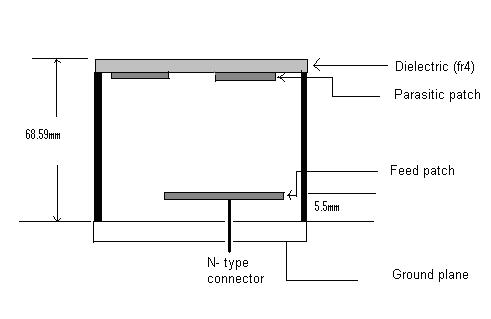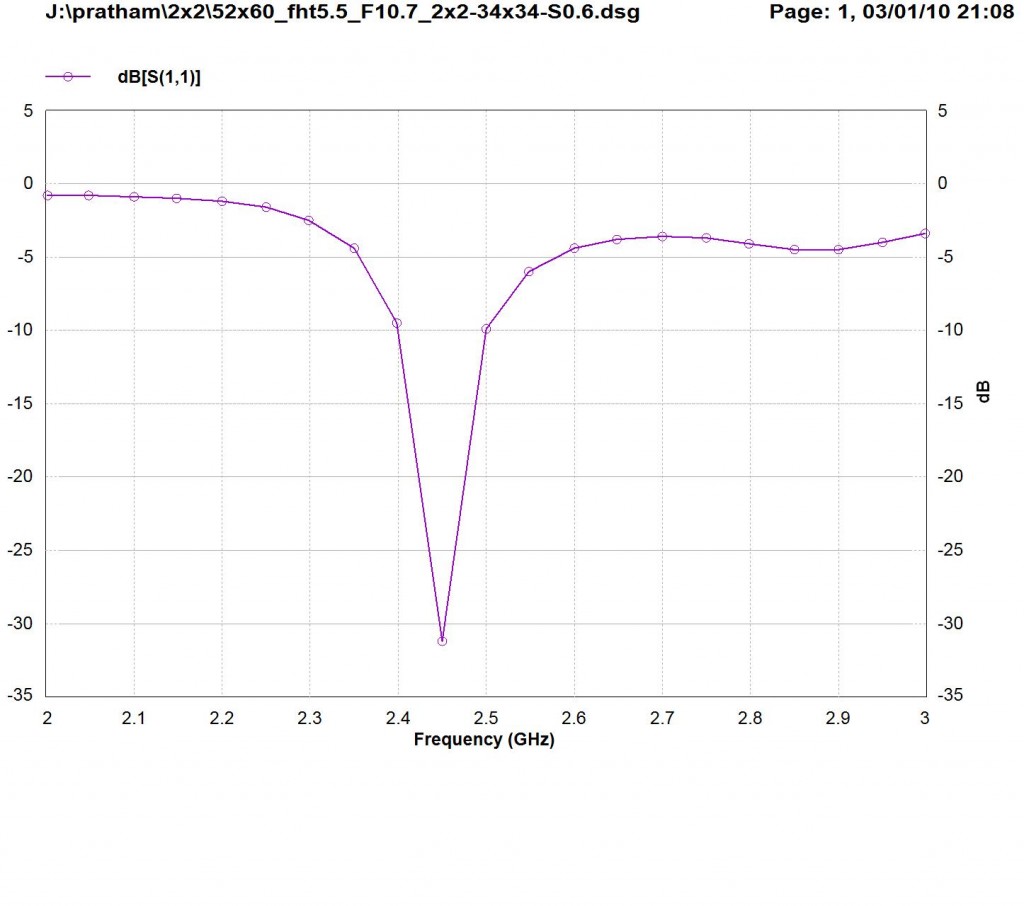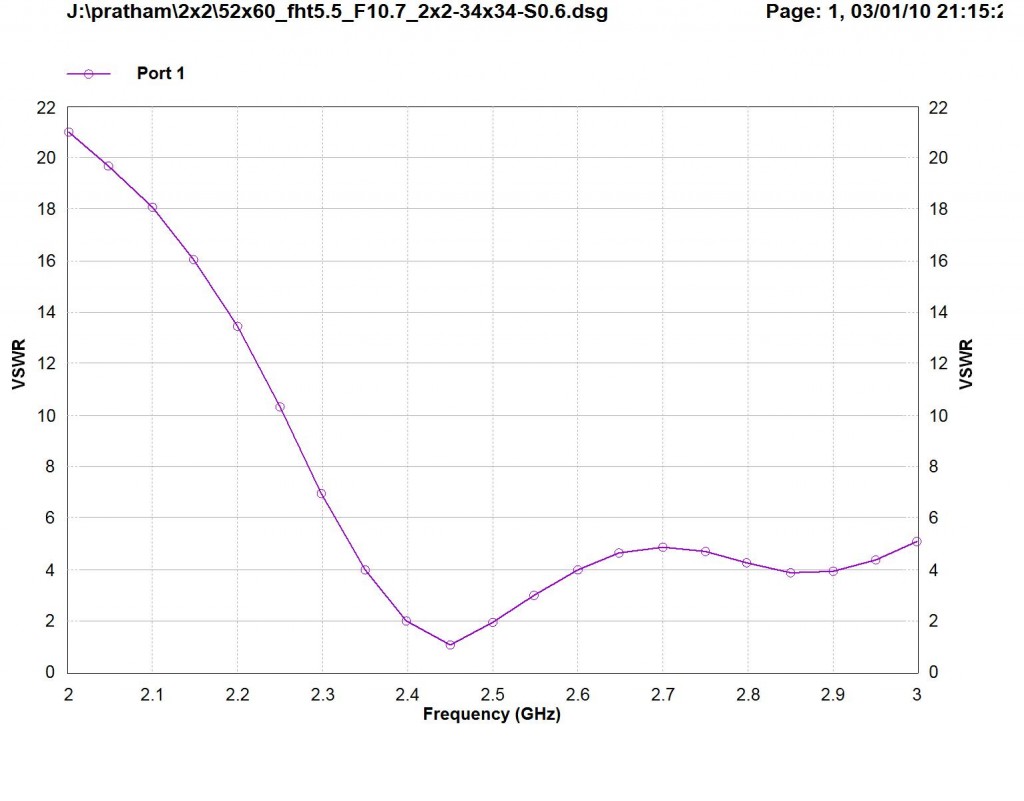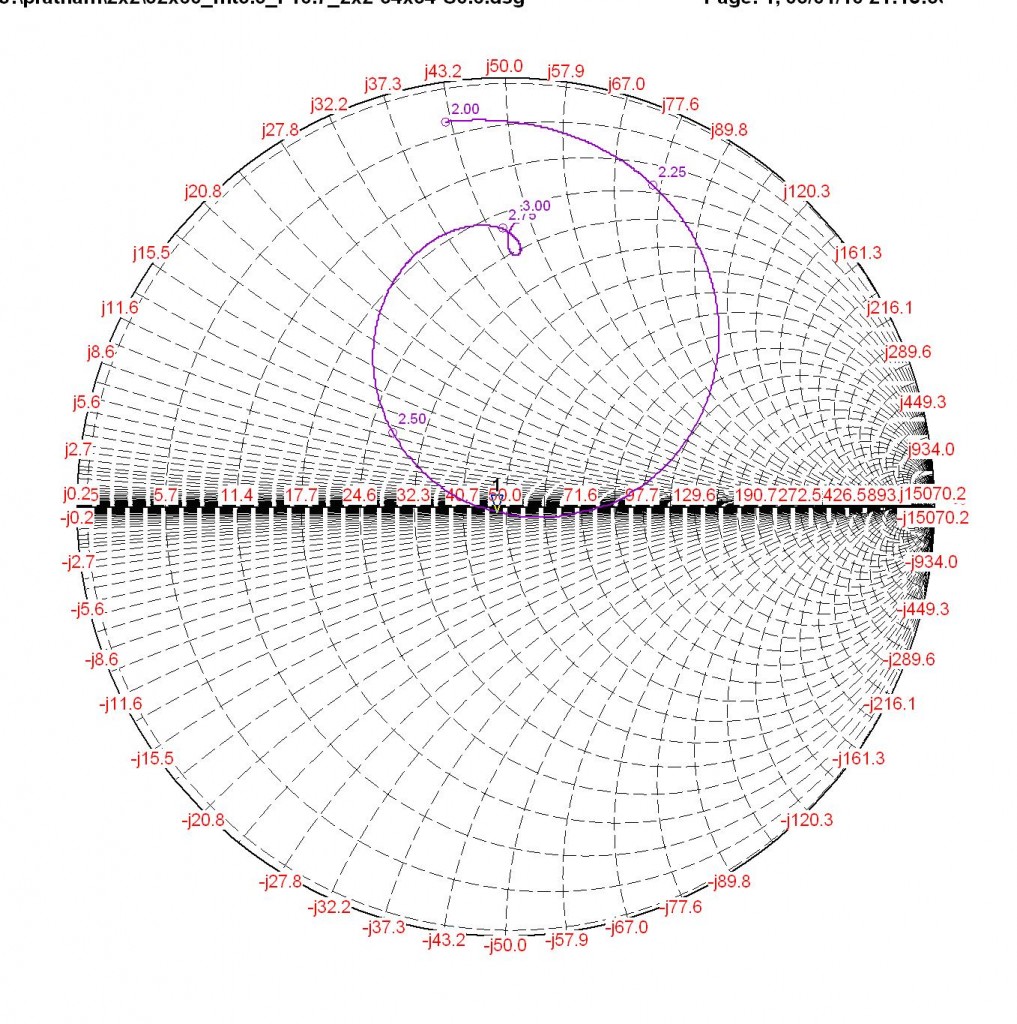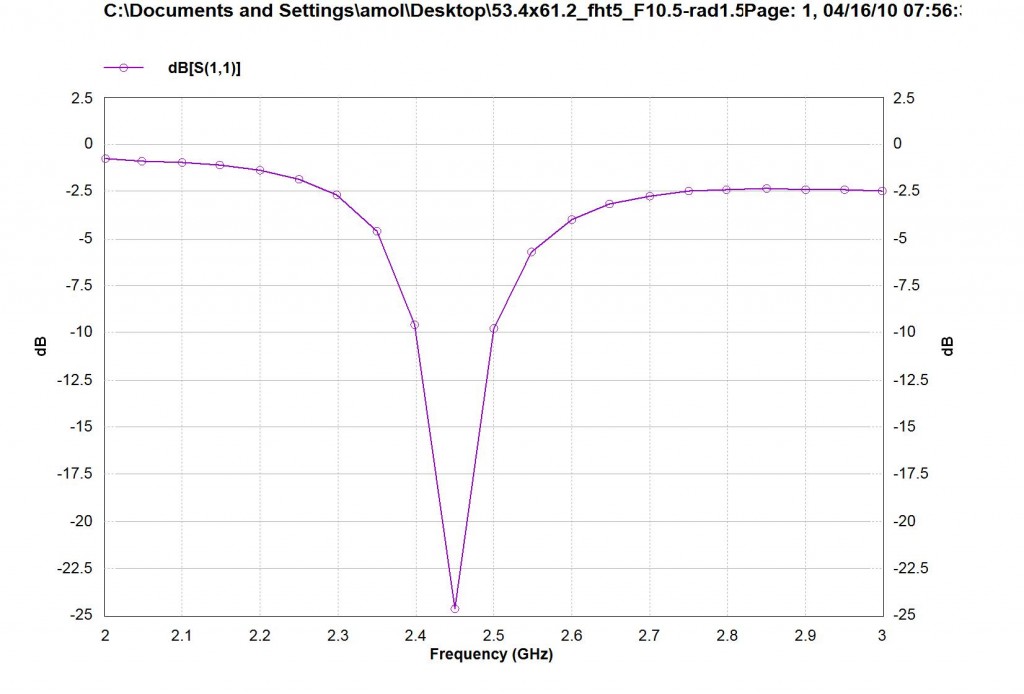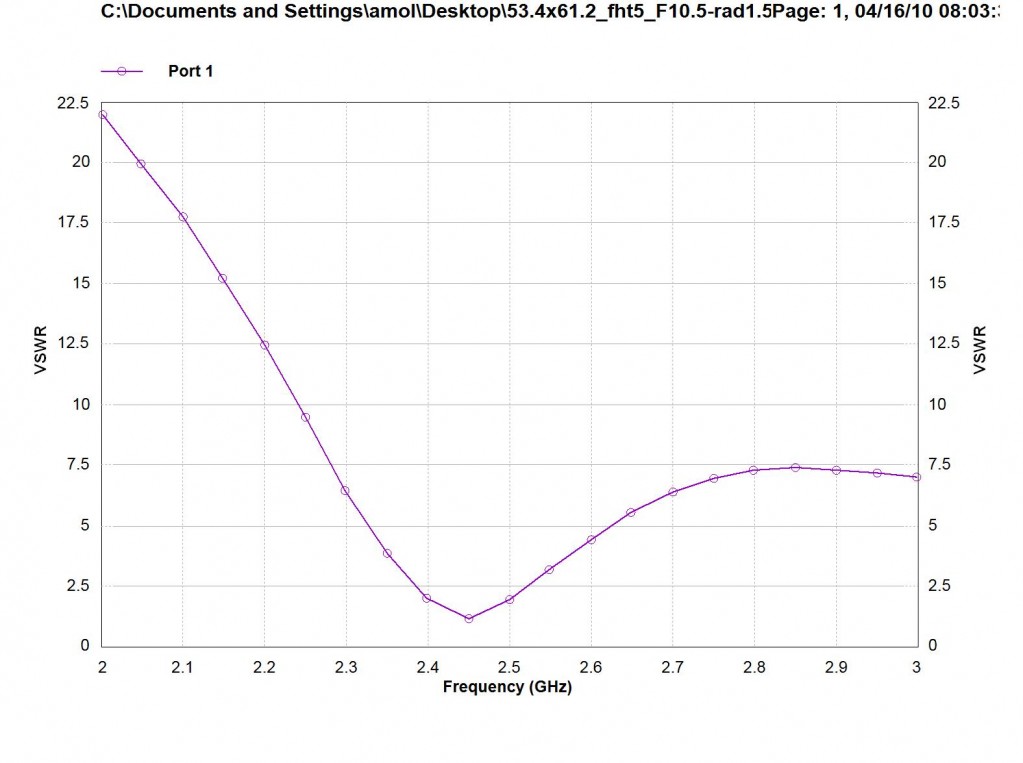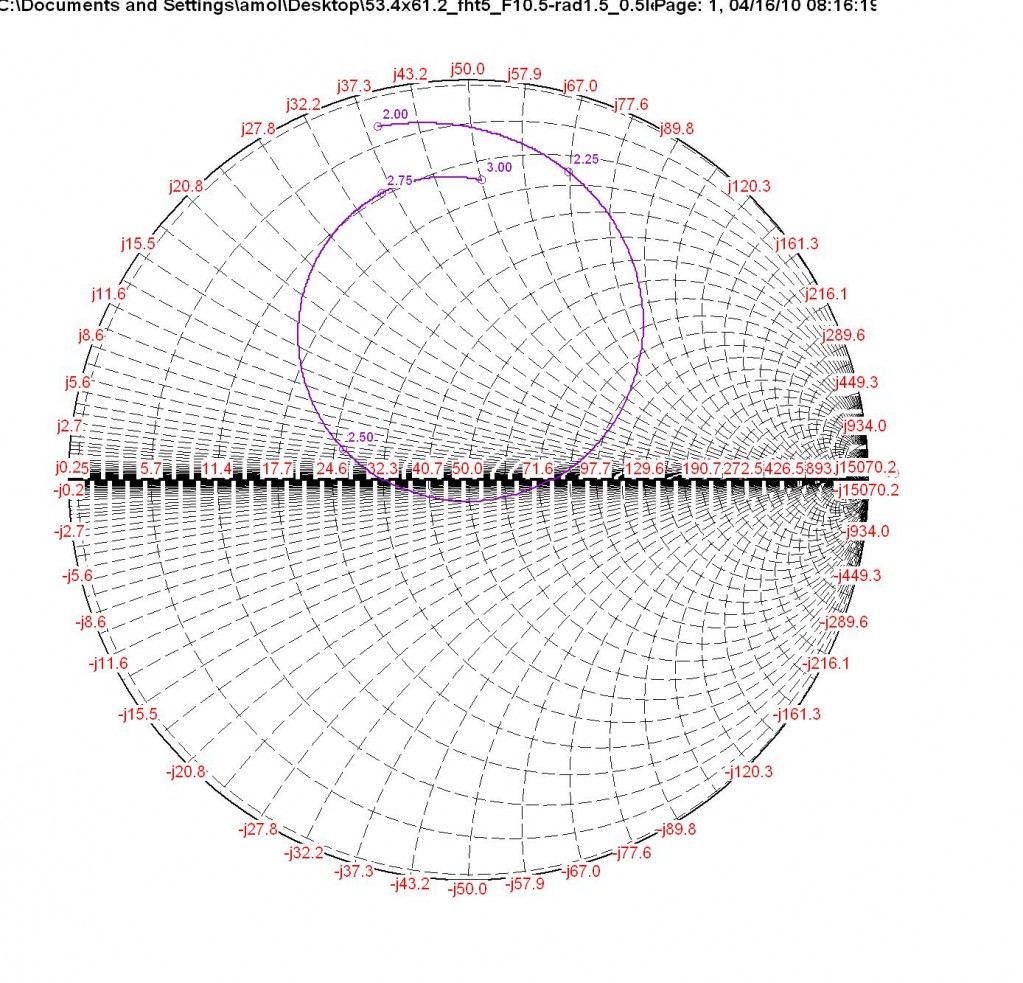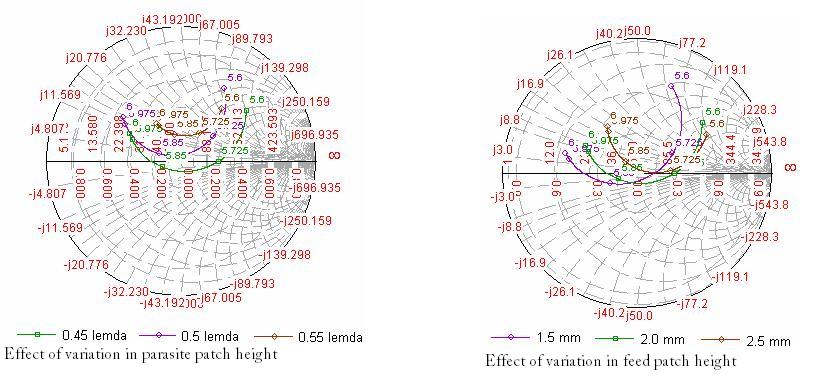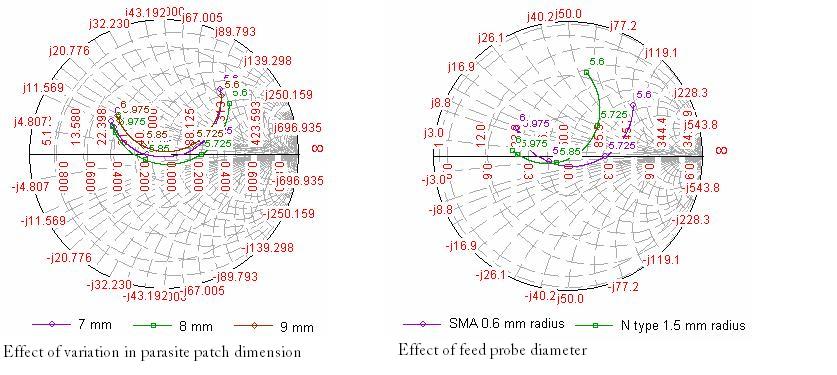Technical Paper Title: Design and development of stacked planar high gain antenna for wireless communication
Authors: Amol Kadam,Prathamesh Indulkar, Atul borate & Rohit jadhav, 4th Year, Electronics and Telecommunications
Guide: Prof. V. P. Patil
College: SMT Indira Gandhi College of Engineering
Abstract: The research in wireless communication has spurred the development of extra ordinary range of antennas, each with its own advantage and limitations. There are many applications where space is at premium, and where there is an urgent need for an antenna with the flexibility to efficiently combine the capabilities of multiple antennas. The conventional microstrip antennas (MSA’s) consist of single conducting patch on a grounded electric substrate fed by microstrip line or coaxial probe. These antennas have received wide spread popularity in the recent years due their many advantages like, low profile, low cost, light weight and integrability with MMIC design. However due to their inherent resonant behavior, they have narrow bandwidth operation. The typical bandwidths are just 1 to 4%. In this paper, we present a method to enhance the gain of antenna by array method. The result shows satisfactory performance with gain of about 15 db. The design is suitable for array application.
1. Introduction
Microstrip antenna technology has been the most rapidly developing topic in the antenna field in the last fifteen years, receiving the creative attentions of academic, industrial, and government engineers and researchers throughout the world. During this period there have been over 1500 published journal articles, many books and innumerable symposia sessions and short courses devoted to the subject of microstrip antenna and arrays. As a result microstrip antennas have quickly evolved from academic novelty to commercial reality, with applications in a wide variety of microwave systems. In fact, rapidly developing markets in personal communications systems (PCS), mobile satellite communications, direct broadcast television (DBS), wireless local area networks (WLANs), and intelligent vehicle highway systems (IVHS), suggest that the demand for microstrip antennas and arrays will increase even further.
Although microstrip antennas have proven to be a significant advance in the established field of antenna technology, it is interesting to note that it is usually their nonelectrical characteristics that make microstrip antennas preferred over other types of radiators. Microstrip antennas have low profile and are light in weight, they can be made conformal and they are well suited to integration with microwave integrated circuits (MIC’s). If the expense of the materials and fabrication is not prohibitive, they can also be low in cost. When compared to traditional antenna elements such as reflectors, horns, slots, or wire antennas, however, the electrical performance of the basic microstrip antenna or array suffers from a number of serious drawbacks; including very narrow bandwidth high feed network losses, poor cross polarization, and low power handling capacity. The purposes of this paper are to provide a comprehensive survey of the state of microstrip antenna element technology. The paper begins with a review of the state of printed circuit materials technology as it affects the design of microstrip antennas, and then describes several theoretical approaches to the analysis of rectangular patches. A discussion of the bandwidth and efficiency of the elements is presented. The paper concludes with suggestions for future critical needs in the future development of the antenna.
2. Development History
The microstrip antenna concept dates back about 26 years to work in the U.S.A. by Deschamps [1] and in France by Gutton and Baissinot [2]. Shortly thereafter, Lewin investigated radiation from stripline discontinuities. Additional studies were undertaken in the late 1960’s by Kaloi, who studied basic rectangular and square configurations. However, other than the original Deschamps report, work was not reported in the literature until the early 1970’s, when a conducting strip radiator separated from a ground plane by a dielectric substrate was described by Byron. This half wavelength wide and several wavelength long strip was fed by coaxial connections at periodic intervals along both radiating edges, and was used as an array for Project Camel. Shortly thereafter, a microstrip element was patented by Munson [3] and data on basic rectangular and circular microstrip patches were published by Howell. Weinschel developed several microstrip geometries for use with cylindrical S band arrays on rockets
3. Rectangular Microstrip Antenna Structure
The microstrip device in its simplest form consists of a sandwitch of two parallel conducting layers separated by a single thin dielectric substrate [4]. The lower conductor functions as a ground plane and the upper conductor may be a simple resonant
rectangular patch, and the associated feed network. The feed network employed may be a microstrip transmission line or coaxial fed connector. Fig 1 shows a microstrip line fed rectangular microstrip antenna and coaxial fed rectangular microstrip antenna respectively.
Fig 1 Microstrip Line fed rectangular microstrip antenna
RESULTS
2X2 STRUCTURE.
—-(above fig) RETURN LOSS
—-(above fig) VSWR
—-(above fig) IMPEDANCE AT RESONANCE
3X3 STRUCTURE.
—-(above fig)RETURN LOSS
—-(above fig)V.S.W.R
—-(above fig)IMPEDANCE AT RESONANCE
PARAMETRIC STUDY
Antenna performance without substrate & with substrate
| Structure | Dir
dB |
Gain
dB |
η
% |
Bandwidth
% |
| Without
Substrate |
9.6 | 9.6 | 99 | 5.7 |
| With Substrate | 12 | 11.7 | 92 | 4.8 |
Performance of rectangular feed patch with different parasites
Effect of variation in parasite patch height on antenna performance
| Height
(mm |
Directivity
(dB)
|
Gain
(dB) |
Side Lobe
Level (dB) |
Cross
Pol (dB) |
| 0.5 λ0 | 13.6 | 13 | -19 | -21.8 |
| 1.0 λ0 | 14 | 13 | -6.5 | -20.8 |
| 1.5 λ0 | 13 | 12.6 | -5.5 | -20.5 |
| Parasite shape | Dir
dB |
Gain
dB |
η
% |
CP
dB |
Band
Width % |
| Rectangle | 13.9 | 13.3 | 87 | -22 | 3.6 |
| Circle | 13.3 | 13 | 92 | -21 | 3.6 |
| Square | 13.6 | 12.8 | 83 | -21 | 3.8 |
3.1 Feeding methods
There are generally three common types of feeding mechanisms in microstrip patch antenna. Microstrip line fed, coaxial connector feed, and aperture feed method. The microstrip line fed method incorporates feed structure on the surface of substrate itself, facilitating us to integrate in microwave integrated circuits. The drawbacks of this feed are cross polar radiations and complex design of matching element. In coaxial feed method, a coaxial connector is directly soldered to patch element and impedance matching is achieved by variable locations of feed, the drawback here is that, it is needed to drill the hole in the substrate material through which the connector protrudes to the patch. In aperture feed method, the patch is indirectly excited by source. The structure becomes complex in this method, but on the other hand it provides more number of variable for optimizing the structure and hence better control of radiation pattern can be achieved.
5. Advantages and disadvantages of microstrip patch antennas
MSAs have several advantages compared to the conventional microwave antennas. The main advantages of MSAs are listed as follows:
· They are lightweight and have a small volume and a low-profile planar configuration.
· They can be made conformal to the host surface.
· Their ease of mass production using printed-circuit technology leads to a low fabrication cost.
· They are easier to integrate with other MICs on the same substrate.
· They allow both linear polarization and CP.
· They can be made compact for use in personal mobile communication.
· They allow for dual- and triple-frequency operations.
MSAs suffer from some disadvantages as compared to conventional microwave antennas. They are the following:
· Narrow BW;
· Lower gain;
Low power-handling capability.
MSAs have narrow BW, typically 1–5%, which is the major limiting factor for the widespread application of these antennas. Increasing the BW of MSAs has been the major thrust of research in this field.
6. Applications of Microstrip antennas
The advantages of MSAs make them suitable for numerous applications. Some of the applications of MSAs are listed in table given below,
| System | Applications |
| Aircraft and ship antennas | Communication and navigations, altimeters, blind landing systems |
| Missiles | Radars, proximity fuses, and telemetry |
| satellite communications | Domestic direct broadcast TV, vehicle based antennas and communication |
| Mobile radio | Pagers and hand telephones, man pack system and mobile vehicle |
| Remote sensing | Large light weight apertures |
| Biomedical and others | Applications in medical Hyperthermia, intruder alarms, personal communications etc. |
Future Development
- Design, analysis, finite ground array structures
- Analysis of exact calculation of mutual coupling between the array elements
- Analysis of parameters using 3×3 array structure
- Modeling techniques of patch elements
References:
[1] G. A.Deschamps, “Microstrip microwave antennas”, presented at the 3rd USAF Symp. on antennas, 1953.
[2] H. Gutton and G. Baissinot, “Flat aerial for ultra high frequencies”, French patent No. 703113, 1955.
[3] R. E. Munson, “Single slot cavity antennas assembly”, U.S. patent No. 3713 162, January 23, 1973.
[4] Reference data for radio engineers, 5th ed. Indianapolis, IN: Howard W. Sams, Oct. 1968, Ch-22, pp 25-27.
[5] K.P. Ray and G. Kumar, “Broadband Microstrip Antennas”, Archtech House, ISBN: 1-58053-244-6, 2003.
[6] V. C. Kshirsagar, “Design and development of stacked planar high gain antenna for wireless communication”, Dissertation report, M. E., Mumbai University, July 2008.

